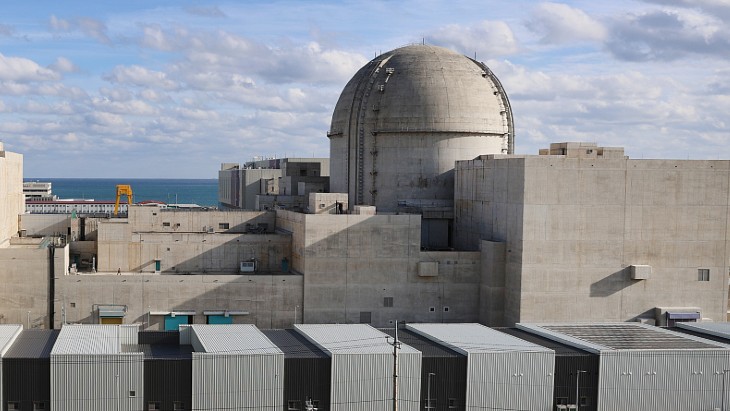The latest reports from the International Atomic Energy Agency (IAEA) on its work to monitor nuclear activities in Iran, North Korea and Syria illustrate a frustrating stop-start pattern of progress. The IAEA is no longer able to give 'credible' assurance that no undisclosed activities are taking place in Iran.
Using marginally more stern official language than in previous reports, the IAEA began a 30 August report by explaining why the 11 resolutions that its Board of Governors has made so far on Iran are binding under the UN system. These include the suspension of uranium enrichment, which Iran continues to practice. The IAEA then explained that a series of talks took place between IAEA experts and Iranian officials in recent months.
The two sides talked in May, June and August but were unable to agree a structured approach to solving the outstanding issues, and as a result the IAEA's efforts have achieved "no concrete results."
Bushehr at full power
Separate from proliferation concerns, Iran's first nuclear power reactor at Bushehr reached full power today, according to constructor AtomStroyExport of Russia. The unit is a unique VVER model that re-uses buildings and components of a Siemens unit abandoned during construction in the 1970s. Commissioning has taken over a year, but it is now producing its rated power of 915 MWe. Nuclear fuel is provided by Russia and will be returned to that country after use.
Agency experts were, however, granted access to the IR-40 heavy water research reactor at Arak and were able to survey the site to determine how safeguards systems could be installed. One complication with this was the fact that the latest design information provided by Iran to the IAEA dates from 2007 and much engineering and design has occurred since then.
The unit is at a fairly advanced stage, slated for operation in the third quarter of next year and with cooling and moderator piping currently being installed. Natural uranium fuel pellets are being made, as are dummy fuel assemblies that don't contain uranium. Production of heavy water continues, and the IAEA was allowed to visit the plant - once - but not allowed to take samples of the water.
The Tehran research reactor is operating with a core containing one 20%-enriched fuel plate manufactured entirely in Iran. Facilities to make the plates have been consolidated and 31.1 kg of 20%-enriched uranium in the form of U3O8 is ready for use. The country also has 189.4 kg of 20%-enriched uranium in the form of UF6. The IAEA noted reports that Iran plans to build four or five similar research reactors in coming years, which would all require stocks of 20% enriched fuel. In terms of low-enriched fuel, Iran's stockpiles amount to 6.8 tonnes of uranium enriched up to 5%.
In conclusion, and considering several other matters, the IAEA said that "Iran is not providing the necessary cooperation" and as a result the agency is "unable to provide credible assurance" there are no undeclared nuclear materials or activities in Iran.
Syria
Given the civil war conditions in Syria, it is no surprise that the IAEA has made little progress in ascertaining the nature of a non-power reactor program apparently disrupted by an Israeli air strike in September 2007. The agency confirmed 'anthropogenic' uranium at the destroyed facility in 2008 and concluded in 2011 that it was "very likely" the destroyed facility had been an undeclared reactor. During 2011, Syrian officials restricted access to the site and refused to discuss three other locations that IAEA considers "critical" to resolving outstanding questions.
North Korea
IAEA's report on North Korean confirmed progress is being made on a small non-power light water reactor of about 100 MWt capacity at Yongbyon. It said that main buildings are built, the reactor containment dome has been lifted into place and there is evidence of engineering for the pumping of coolant water. The agency has been officially told nothing of the unit's design or rationale for construction and can tell little from satellite imagery. The same applies to a potential centrifuge enrichment plant apparently under construction or in operation at Yongbyon.
A breakthrough appeared to have been made in February this year when a commitment from North Korea to suspend enrichment and nuclear weapon tests emerged from talks with the USA in the Chinese capital, Beijing. In March, discussions with IAEA officials in Vienna resulted in agency experts being invitied to North Korea to consider technical issues related to the commitment. However, this invitation was "discontinued" in June. The IAEA said it remains ready to engage with North Korea, subject to board approval.
The reports on the three countries of concern came from the IAEA director general Yukiya Amano and are for the consideration of the board of governors ahead of the agency's General Conference at its headquarters in Vienna, Austria between 17 and 21 September.
Researched and written
by World Nuclear News




_72306.jpg)


_49562.jpg)





